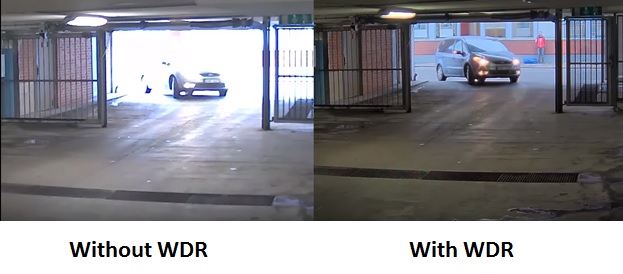What Is Wide Dynamic Range (WDR)?
Dynamic range is the ratio of the maximum signal output of the sensor to the smallest signal output of the sensor. Or, in other words, dynamic range is the ratio of the brightest portion (maximum output) of the image to the darkest portion (smallest output) of the image.
The wide dynamic range (WDR) function of a camera is intended to provide clear images even under back light circumstances where intensity of illumination can vary excessively, namely when there are both very bright and very dark areas simultaneously in the field of view of the camera. WDR enables the capture and display of both bright and dark areas in the same frame, in a way that there are details in both areas, i.e. bright areas are not saturated, and dark areas are not too dark.
In surveillance, WDR allows a camera to filter the intense back light surrounding a subject and thus enhances the ability to distinguish features and shapes on the subject. WDR cameras are usually recommended for situations where light enters a premise from various angles such as a multi-window room. A camera placed on the inside of the room will be able to see through the intense sunlight or artificial light coming in. If an indoor security camera is pointed towards a window or an entrance door, you will see the background washed out during daytime. This is a very common situation in restaurants and stores which have big glass windows.
In a scene with extremely bright and dark areas or in back-light situations where a person is in front of a bright window, a typical camera would produce an image where objects in the dark areas would hardly be visible. Wide dynamic range solves this by applying techniques such as using different exposures for different objects in a scene to enable objects in both bright and dark areas to be visible. Below is an example of a wide dynamic range in action.



